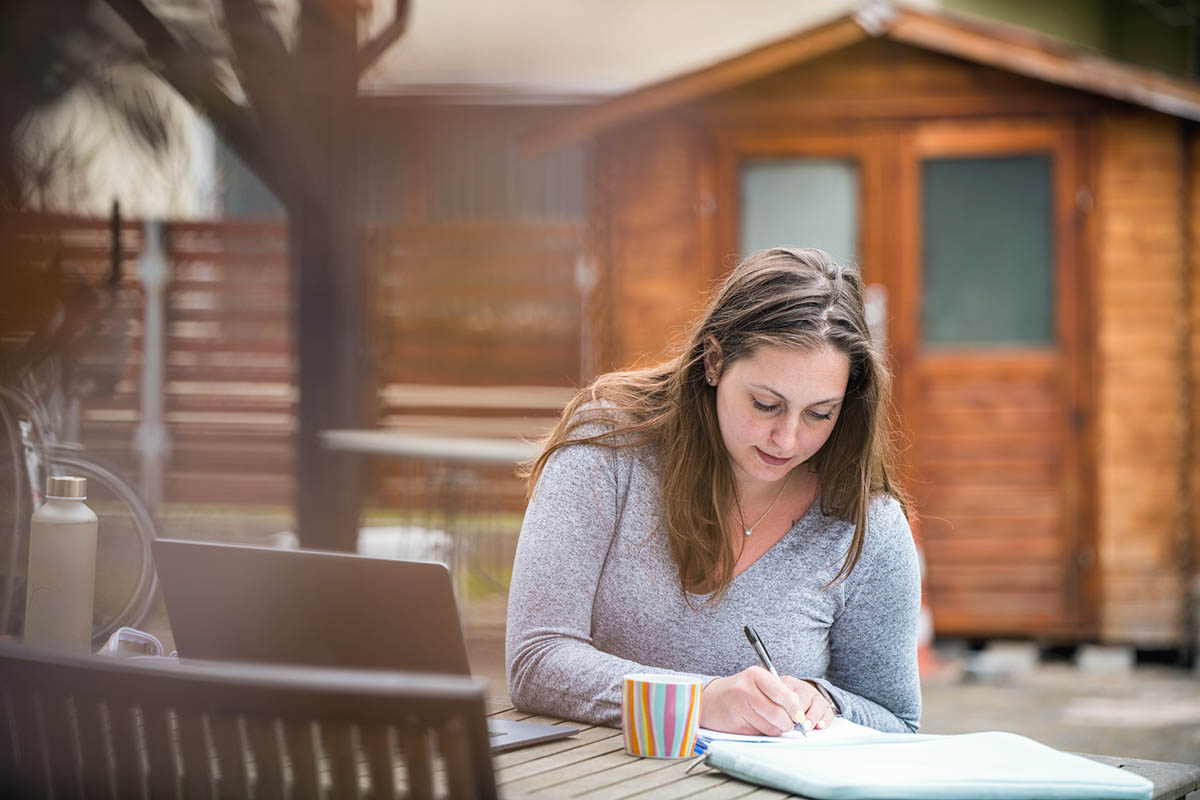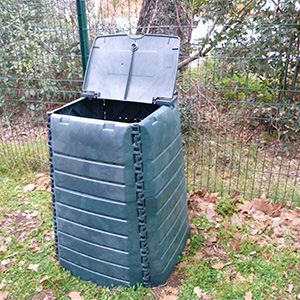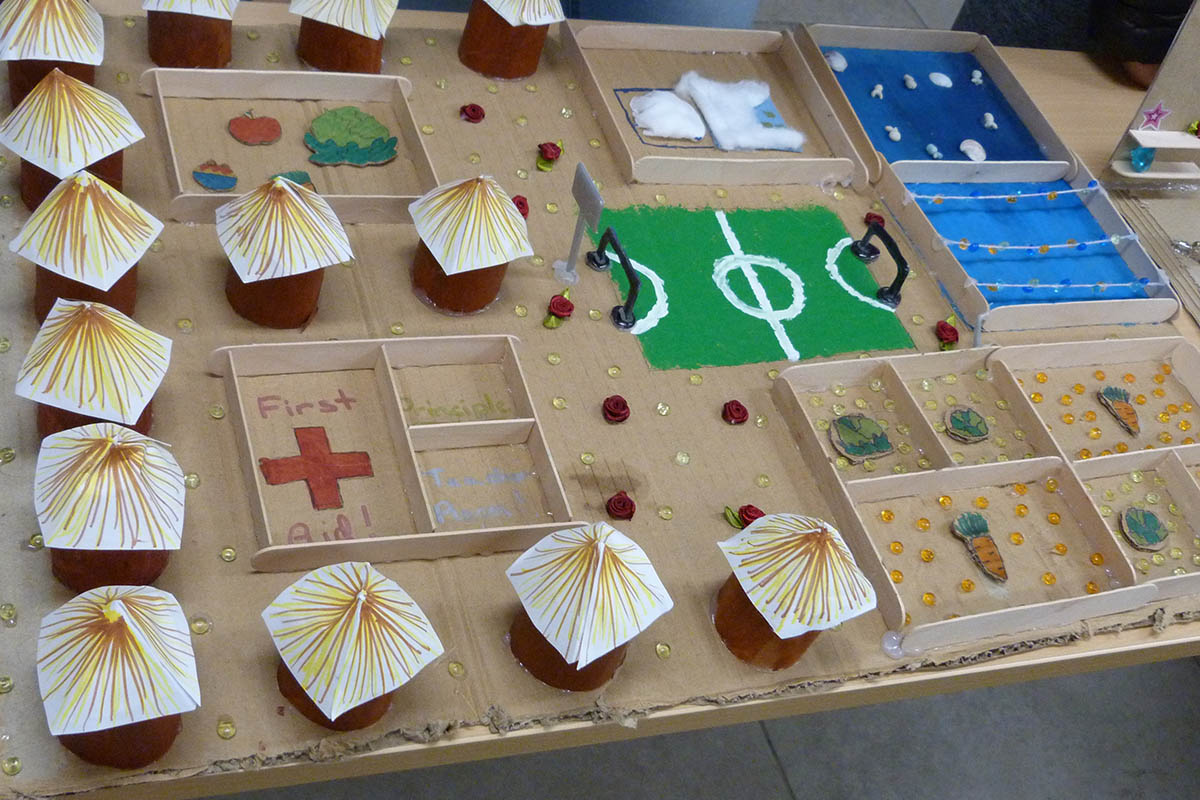As the COVID-19 (Coronavirus) pandemic makes blended learning more prevalent, Middle Years Programme (MYP) individuals and societies teacher Novadene Miller shares her techniques for inspiring students in this new educational landscape.

The global pandemic has posed huge challenges, but it has also offered opportunities to use different teaching methods as blended learning becomes the norm. So how can teachers navigate this enriched environment in the Middle Years Programme (MYP) individuals and societies course to help inspire a new generation of thinkers and decision-makers?
Here, I look at some techniques and examples that can provide ways to engage peer support, complement parental support and increase engagement among students in a dynamic way.
Inspiring students to be world decision-makers
Approaching students as individuals with power and purpose influences how they relate with you and how they communicate with their peers. As teachers, we are challenged to not just repeat what’s happening in the world but to navigate how students view their footprint and encourage them to be decision-makers at a community, national and global scale.
How effective are we in prompting inquiry and exploring what students are passionate about? What we must do is find methods to provide a framework for bottom-up solutions and initiatives to global problems.
“This virtual context can provide an opportunity for students who are usually shy to be given opportunities to lead”.
Resources exist in our own communities but we often overlook them. We can work on global problems and concepts with experts during webinars and look at solving concrete scenarios with live activities using virtual classrooms. This can extend the dialogue of inquiry and help students go beyond stereotypes while learning facts and innovative results from concrete studies outside of their usual perspectives.
For example, as a Jamaican teaching in France, I have introduced my MYP class to real-life solutions and concepts connected to Jamaica. While studying a unit on population, I invited a Jamaican occupational health psychologist from the University of Nottingham, UK to examine the topic ‘Understanding Risks in Work Populations’. Students inquired how safety policy and practices at work can prevent harm among workers in everyday life, as well as identifying international organizations that promote and protect safety and health at work. Students reflected on the relevance of this session to their future careers. They were able to define terms such as safety and health, work population, work and risk etc.
Students have been propelled to engage in ways they couldn’t in a traditional classroom setting. This virtual context can provide an opportunity for students who are usually shy to be given opportunities to lead. They can be given roles such as chair of a virtual conference or act as the technician for computer-linked tasks in the virtual classroom.
As a teacher, this has been a learning experience as I saw students with access and inclusion needs excel in this virtual learning context. This has made me reflect on how I can make virtual and traditional classrooms places where all students feel included and are provided with opportunities to highlight their strengths.
Being creative with resources
Teachers need to be creative with resources when students are learning at home. In individuals and societies, we focus on different biomes and the link with governance systems to make sustainability possible. A key element in sustainability is a focus on bottom-up approaches with an emphasis on local population initiatives, including our school community.

For this topic, a teacher could give directions to students to create compost, build a composter or a vertical garden and adapt the instructions to a virtual or physical classroom. This could be followed by a workshop on recycling and sustainable habits.
Our students decided to design a vertical garden on the campus, researching the materials to be used. This garden will serve as a pedagogical tool and facilitate vertical learning as they will sow seeds with younger students in a collaborative effort.
Resources also include parent experts who can be invited in virtual meetings to discuss real-life examples, giving context to the problems that need solving. Parents can also provide examples of global citizenship. Prior to International Women’s Day, I held a conference with students and invited a parent as our expert guest because she has worked as a director. This conference fostered structured inquiry linked to the challenges and opportunities of women in business, in parallel with the role of women and men in society and the future of students beyond the classroom.
Inspiring students to solve global challenges
Activities such as student-led conferences can mobilize them to take global action. Students can set up recycling collection points for a range of objects such as batteries, plastic and glass.
Our school participated in a project to recycle batteries and the collection was matched by financial donations. The funds raised were used to provide research for children with rare illnesses and at the same time, the project facilitated providing solar electricity for a local school in French Guyana. This experience led students to see how they can create a movement of sustained ecological behavior.
Responding to global challenges encourages students to engage in a cause. For example, on International Children’s Day, students participated in three challenges proposed by UNICEF which included reimagining the type of world they wished to create. Students presented their interpretation of the challenges in class using peer workshop learning techniques. They then presented their work to the president of UNICEF for Languedoc-Roussillon. This was linked to our unit on: What does it mean to be a global citizen?
This collaboration with UNICEF has also laid the foundation for the creation of a UNICEF club, whereby students can be part of the global dialogue as world decision-makers and thinkers on concepts such as equality and sustainability.

A design for an ecological school with recyclable elements.
Creating spaces for dialogue
I have created mental health spaces to foster conversations between students on how they feel—introducing games, videos and dialogue to do this. Globally, kits are available to assist teachers, especially on World Mental Health Day that takes place on 10 October.
Redefining the classroom
As a geographer, it is easy to see the world within the definitions of physical space, time zones and geological definitions. However, the idea of a physical classroom has been redefined due to the global pandemic. The classroom can a student’s backyard, a virtual location, the surroundings of the school or a national park to mention a few.
In May 2020, during the COVID-19 (Coronavirus) pandemic when we were legally confined at home in France, the yard became the classroom for a group of MYP students. I used an international day as part of a unit on population. I used an animation kit from UNICEF for UNIDAY on 29 May, which focuses on solidarity among children at a global level. The kit provided a framework for children to learn about access to education and equality in an engaging way.
“I hope this article has shown you how we can learn beyond the four walls of the classroom”.
We celebrated the day virtually and made memories while learning, advocating and building awareness. Students developed their IB learner profile attributes such as being a thinker and open-minded.
Combining the use of technology with imagination
Students can use their technical gadgets such as drones, GoPro cameras and software tools to travel virtually and explore changes in the community’s landscapes that they have travelled to. This provides a framework to examine IB global context variables such as time and space. The scope of inquiry was extended by students using their drone images to capture the current representation of the space that is less visible in topographic maps.
I hope this article has shown you how we can learn beyond the four walls of the classroom while using the unique features of a global living classroom consisting of multiple origins and perspectives.

Novadene Miller teaches geography in the IB Diploma Programme (DP) Geography and the International General Certificate of Secondary Education (IGCSE) at Institut International Lancy in Geneva, Switzerland. At the time of publication, Novadene was an MYP teacher for individuals and societies, design product conception and service as action at the Ecole Privée Bilingue Internationale, located in Baillargues, near Montpellier, France.
